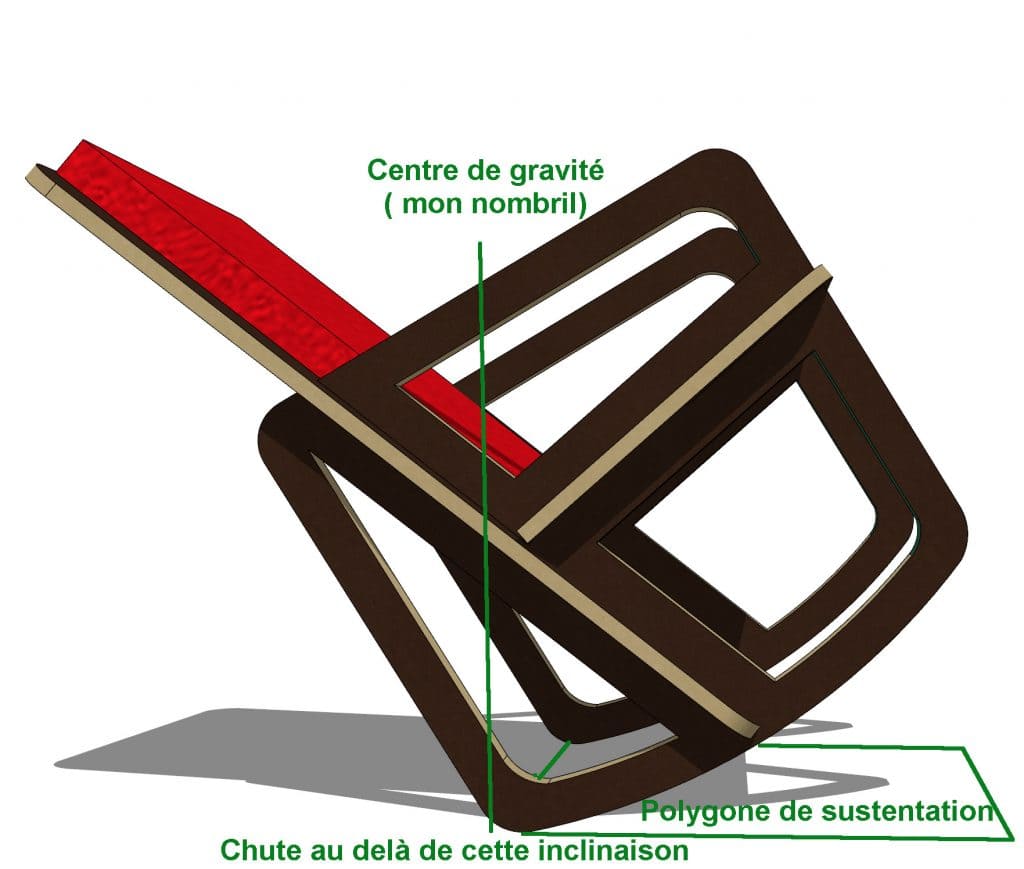Is there a risk of going backwards in a rocking chair?
The risk exists but it is low if the rocking chair is properly drawn.
To apprehend this risk the question to ask is: in which case can I switch back (or forward) in a rocking chair? The answer
is simple: if my center of gravity comes out of the sustening polygon, drawn by the base of the rocking chair, I fall.
But where is my center of gravity? It’s close to my belly button.
When I’m standing I can trace my sustenanting polygon by drawing a rectangle around my feet.
If I lean forward, as long as my navel stays upright from this polygon, I’ll stand. On the other hand if the vertical that passes through my navel comes out of this polygon I fall.
For a rocking chair the sustening polygon is drawn by the rounded base when it is in contact with the ground.
When I flip backwards, if the vertical that passes through my inertia center comes out of that base I fall.

How can the stability of the rocking chair be improved to prevent the fall backwards?
The first solution is to extend the round part of the base backwards, which will increase the size of the sustening polygon.

The second solution is to increase the radius of the round part. If this ray is very large the rocking chair becomes a classic chair with a flat base and it no longer tilts.
On the other hand, if the radius of the base is too small the chair flips very easily and the risk of falling backwards i
s increased. Tip 1: The curvature of the base should have a radius equal to the user’s crotch (1), i.e. 80 cm for a size of 170 cm.
Tip 2: When the seat is horizontal place the center of the base radius to the vertical of the user’s navel.
(1) to measure the crotch put a rigid book between the legs as high as possible and measure the distance from the ground at the top of the book